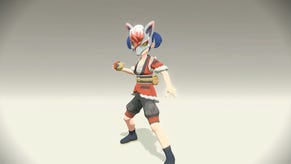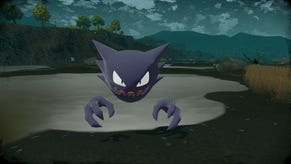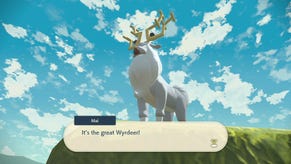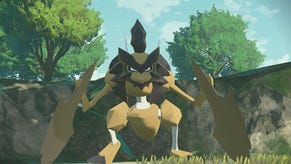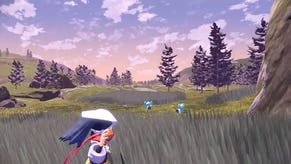Rolling hills and deep valleys with crisp, mountain air. Long, golden beaches with crystal waves lapping at the shore. Young, bustling settlements brimming with human activity. This is Hisui; the setting of the newest Pokemon game, and a location unlike any we’ve ever seen in the Pokemon universe before. You most likely know this region as Sinnoh – that’s what it’s called in the modern-day Pokemon games – but this title is set long before Diamond and Pearl, in a time ‘far ago’, per official Game Freak press releases.
If you’ve got even a passing interest in Pokemon lore, you’ll know that Sinnoh is based on Hokkaido – the northernmost island in Japan. A cursory look at the region’s geography shows it matches up with its real-world counterpart pretty well. We've even got an official map for Hisui that reinforces Game Freak’s somewhat local inspiration. So it goes without saying that Hisui’s legacy is going to be somewhat based on Japanese history, rather than anything more international (we’re not going to see anything based on the US, UK or France here, as we did in Unova, Galar and Kalos, respectively).
So, other than knowing Pokemon Legends: Arcues will take us back in time within a Japanese-inspired historical setting, what else do we know about Hisui? Game Freak and The Pokemon Company have been pretty tight-lipped about the game so far – but that doesn’t mean we haven’t sifted through all the material released for Legends: Arceus to date to pick out some essential information about a mainline Pokemon game’s most mysterious setting to date.
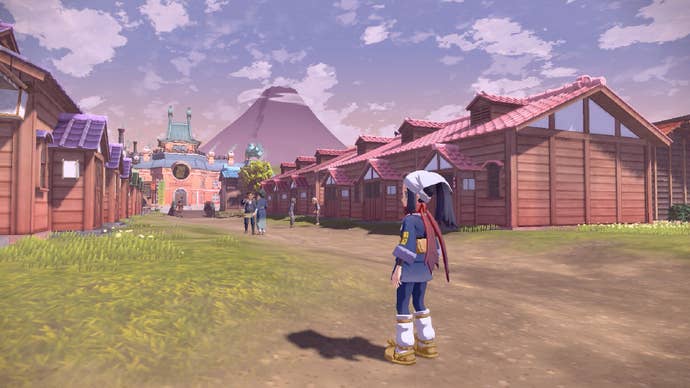
It’s almost certainly more recent than the Feudal Japanese era
It’s tempting to look at Hisui and say ‘it’s set in an era based on Feudal Japan’: the player character’s outfits and the wooden structures populating the towns and villages we’ve seen so far look like they’d fit that era. But the feudal era of Japan only runs up to 1603. Steam-power and a glass lantern seen in one of the Pokemon Arceus trailers would suggest we’re at least in the mid-1800s – far later than the Feudal Japanese era. What does that mean for the game itself? Well, there’s potential for crossovers with other regions we know in the depths of the game’s story, perhaps – we know Pokemon loves teasing other regions here and there, especially once you’ve finished the main quest line – and that could, hopefully, give us some more insight into what Johto, Hoenn or even more exotic regions like Alola and Galar looked like during the same period in history.

It seems to be running on steam power
The most telling thing we know about Hisui’s technology at the moment comes from the region's PokeBalls. These contraptions are pretty different from the more mechanical, laser-based ones we know and love from the last 26 years of Pokemon games. Instead, Hisui’s balls are mostly made from wood, and release a little puff of steam when they catch a Pokemon. Are we to assume, then, that this game is set after the Industrial Revolution? Are we liable to see some rudimentary Pokemon steampunk creations make their debut in the world of Hisui? We can’t be certain yet. There still seems to be a lot of manual labour going on as people tend to the land and build new camps and proto-cities, so it’s safe to assume Hisui is being settled; whether there are any ancient civilisations in this region remains to be seen.
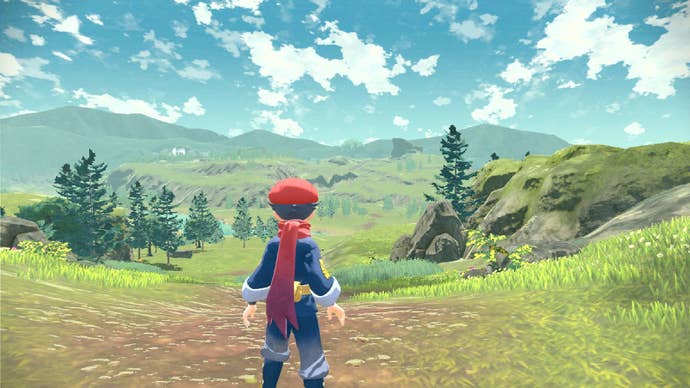
Certain Sinnoh landmarks are already present
Aside from the huge, imposing presence of Mount Coronet sticking out the center of the Hisui region like a monolith, there are some other notable landmarks that we’ve also seen in Pokemon Diamond and Pearl. Going to the top left portion of the Hisui map, we can see Snowpoint Temple, home to the ancient Legendary Pokemon Regigigas. In the Gen 4 games, you can’t enter here until you’ve defeated the Elite Four and been registered in the Hall of Fame. The fact we can see this on the map, pre-release, means that Game Freak wants us to know there’s going to be some connection to the Legendary titans – that’s Regice, Regirock, and Registeel – and the towering Regigigas itself. Will the titans have something to do with awakening or placating the eponymous Arceus? We’re willing to bet they will.
You’ll also see the volcanic Stark Mountain – the home of Heatran – on the horizon there, billowing smoke into the atmosphere. That likely hints at the presence of the Legendary Fire/Steel-type Pokemon, too. There’s also a big lake housing a solitary island to the right of Coronet, suggesting we’ll be interacting with the Lake Guardians and exploring more about the Pokemon world myth of creation. To put it bluntly; there are going to be a lot of Legendary Pokemon in this game. Perhaps that was to be expected in Pokemon Legends: Arceus, though.
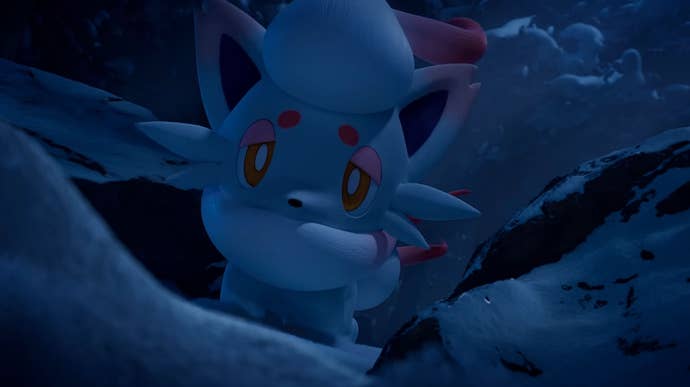
There are Pokemon unique to this place and this time
Hisuian regional forms are a new type of variant Pokémon that you’ll be able to catch in Pokémon Legends: Arceus. Similarly to previous generations of Pokemon, specifically Galar and Alola, Hisuian variants differ in both appearance and type from the Pokemon we know and love. But, given we’ve never seen these Pokemon before – even in Sinnoh – does that mean that they’ve gone extinct? Are we never going to see a Hisuian Zoroark in the modern day games? Will the cute Hisuian Growlithe never make an appearance in a Pokemon Trainer’s party? What happened to Hisuian Voltorb so that we’ll never see those little wooden balls in Unova, Kanto or Kalos? The disappearance of all these Pokemon – and more, surely yet to be announced – is concerning. We just hope we get some nice answers in the game, and our theory about mass extinction isn’t proven correct.


